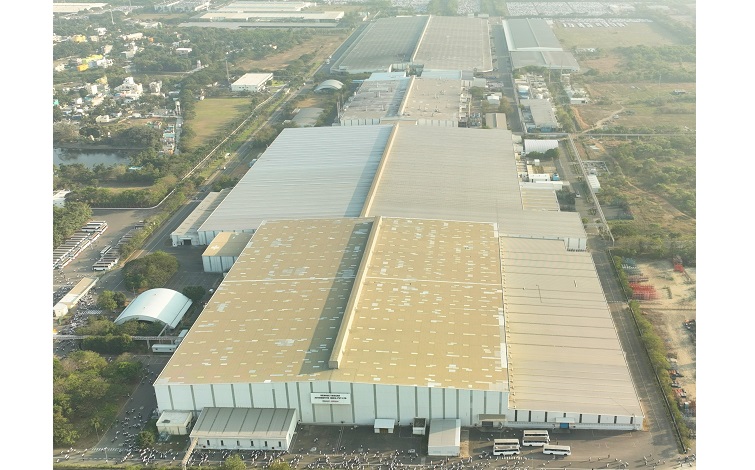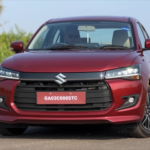On March 31, 2025, Renault Group announced a major shift in its India strategy. The French automaker will acquire the remaining 51% stake in Renault Nissan Automotive India Private Ltd (RNAIPL), taking full ownership of the Chennai manufacturing facility. This move marks a pivotal moment for the Renault acquires RNAIPL stake narrative, reshaping the Renault-Nissan Alliance in India. Let’s explore the details, implications, and what this means for India’s automotive landscape.
Details of the Acquisition
Renault will now hold 100% equity in RNAIPL, a joint venture previously shared with Nissan Motor Corp. Initially, Renault held a 30% stake, while Nissan owned 70% when RNAIPL began operations in 2010. In 2023, Nissan’s stake was reduced to 51% as part of a $600 million joint investment to produce six new models in India. Now, Renault’s acquisition of the remaining 51% stake gives it full control over the Chennai plant, which has an annual production capacity of 480,000 vehicles. The deal is expected to be finalized by June 2025, pending regulatory approvals.

Under the new agreement, Renault and Nissan can reduce their cross-shareholdings to 10%, down from 15%. Additionally, Renault will produce a small electric vehicle (EV) for Nissan starting in 2026, based on the Renault Twingo platform. This aligns with the global shift toward EVs. Meanwhile, both companies will continue to operate the Renault Nissan Technology & Business Centre India (RNTBCI) under its existing 51:49 structure, ensuring collaboration in technology and business services.
Strategic Implications for Renault
This acquisition underscores Renault’s commitment to India, a key automotive market. The Chennai plant, spanning 600 acres in Oragadam, has produced over 2.75 million vehicles and 4.5 million powertrain units since 2010. It serves both domestic and export markets, with vehicles shipped to 108 countries. For instance, Renault currently offers the Kwid, Triber, and Kiger in India, while Nissan sells the Magnite and X-Trail. With full control, Renault aims to leverage the plant’s capacity to boost its market share, which has been under pressure from competitors like Maruti Suzuki and Hyundai.
Renault’s CEO, Luca de Meo, emphasized India’s strategic importance, stating that the company will establish an efficient industrial footprint. As part of its “2027 International Game Plan,” Renault plans to introduce the CMF-B platform in 2026, spawning four new models. This move also relieves Renault from investing in its EV arm, Ampere, allowing it to focus on India-specific products while maintaining differentiation from Nissan’s offerings.
Nissan’s Position Post-Acquisition
Nissan will no longer manufacture cars directly in India but will source vehicles from the RNAIPL plant on a per-car basis. This shift to a variable-cost model aims to make Nissan “leaner and more agile,” according to a senior official. Nissan has committed €700 million to India, with 80% already spent, including €100 million on the new Magnite. The remaining funds will support two new SUVs and EVs by 2026. Despite ceding its stake, Nissan plans to sell 100,000 units annually in both domestic and export markets by 2026, focusing on models tailored to Indian consumers.
Market Context and Challenges
The Indian passenger vehicle market is evolving rapidly. SUVs now account for over 50% of sales, while small cars face declining demand. Renault and Nissan have struggled to gain market share, utilizing only a third of the Chennai plant’s capacity. For example, Nissan produced 99,000 units in FY24—28,000 for the domestic market and 71,000 for exports. Renault aims to revive its past success with models like the Duster and Kwid, but competition from Maruti Suzuki, which holds a 42.2% market share as of February 2025, and Mahindra, with a 13.7% YoY growth, poses a challenge.
Traffic congestion in cities like Bengaluru, with speeds below 20 kmph, and poor road infrastructure outside highways may limit the appeal of new models. Additionally, rising input costs have led to price hikes of up to 4% starting April 2025, potentially impacting affordability. The lack of a strong EV portfolio in the immediate term could also hinder Renault’s growth, as India’s EV market is projected to expand with government support.
Key Details of the RNAIPL Acquisition
| Aspect | Details |
|---|---|
| Stake Acquired | 51% from Nissan, making Renault 100% owner |
| Plant Capacity | 480,000 vehicles annually |
| Production History | 2.75 million vehicles, 4.5 million powertrains since 2010 |
| New Models Planned | Four models on CMF-B platform by 2026 |
| Deal Completion | Expected by June 2025 |
Critical Perspective
The narrative of Renault’s acquisition paints a picture of strategic growth, but it also highlights underlying tensions in the Renault-Nissan Alliance. The timing of the deal, just a day before Ivan Espinosa took over as Nissan’s CEO on April 1, 2025, replacing Makoto Uchida, suggests a broader restructuring. Nissan’s failed partnership with Honda and its global turnaround plan—cutting 9,000 jobs and 20% of capacity—indicate financial strain. Renault, as Nissan’s largest shareholder with a 36% stake, may be unwinding the alliance due to mutual suspicion and competition, as noted in the agreement details.
Moreover, Renault’s focus on petrol and EV models overlooks the demand for diesel and hybrid options in India, especially in the premium SUV segment where the Kodiaq competes. The absence of a clear EV strategy for 2025, despite India’s growing EV market, raises questions about Renault’s preparedness. While the Chennai plant’s capacity is impressive, its underutilization suggests deeper operational challenges that Renault must address to compete effectively.
Conclusion
The Renault acquires RNAIPL stake move positions Renault to strengthen its foothold in India. Full control of the Chennai plant offers opportunities for growth, but challenges like competition, infrastructure, and EV adoption loom large. Will Renault replicate its past successes, or will market dynamics hinder its plans? The coming years will reveal whether this strategic gamble pays off in India’s competitive automotive landscape.
Also Read: BYD India EV Factory Near Hyderabad: Rs 85,000 Crore Boost
Renault acquires RNAIPL stake




